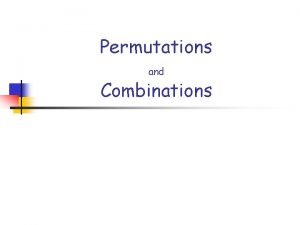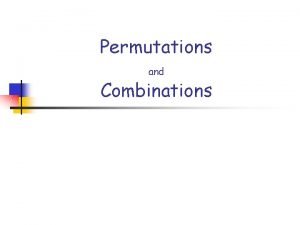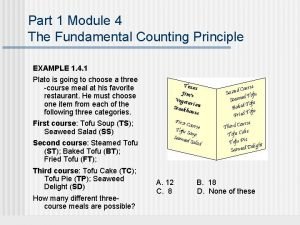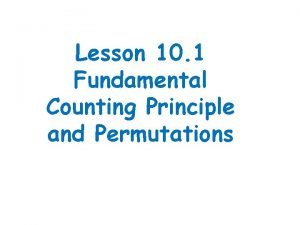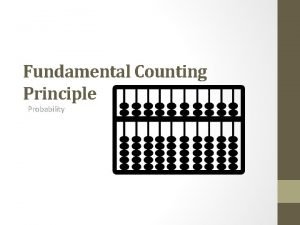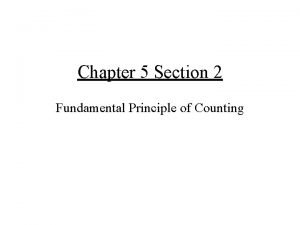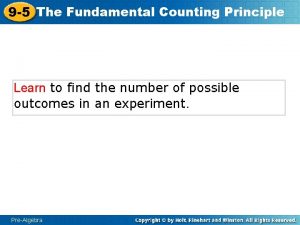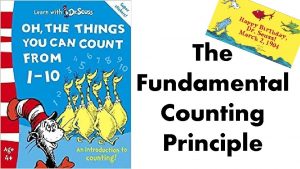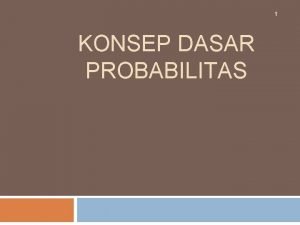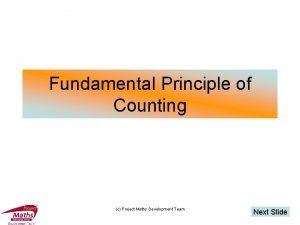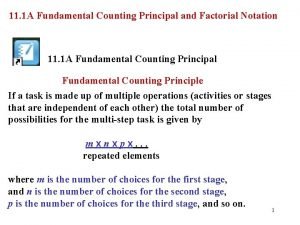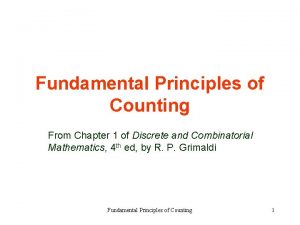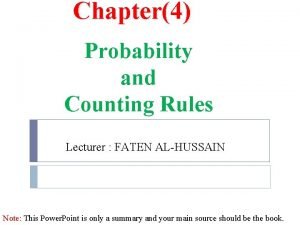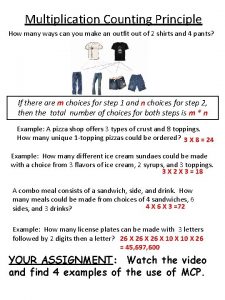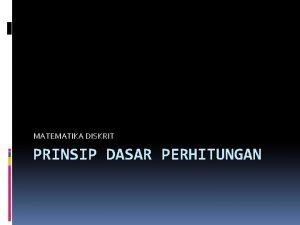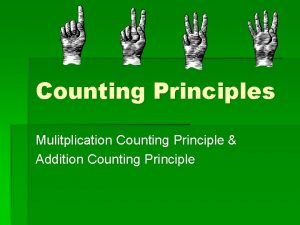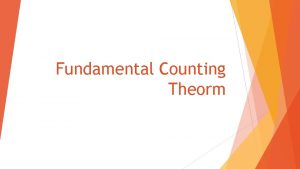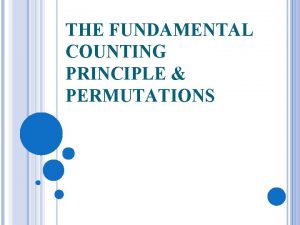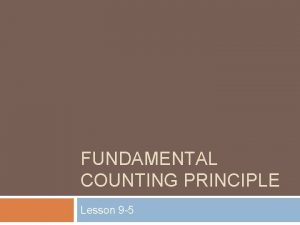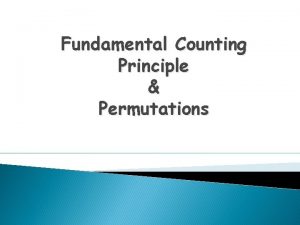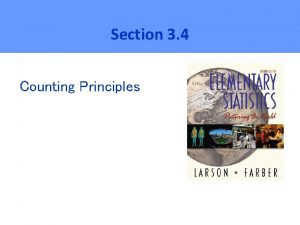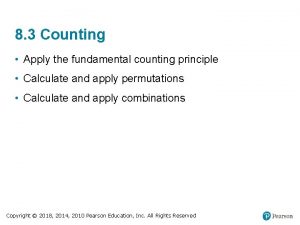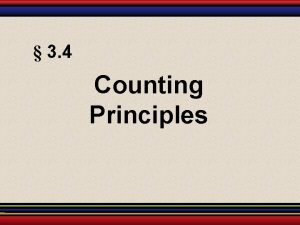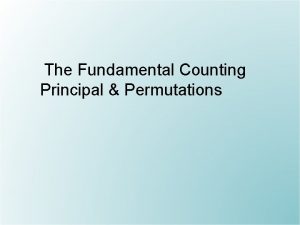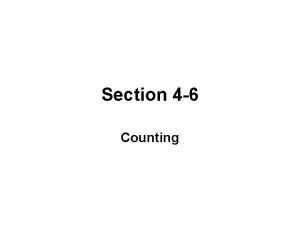Chapter 5 Section 2 Fundamental Principle of Counting


















- Slides: 18

Chapter 5 Section 2 Fundamental Principle of Counting

Definition & Notation • Definition: – Combinatorics : The mathematical field dealing with counting problems • Notation: – Notation to represent the number of elements in a set S : n ( S )

Inclusion – Exclusion Principle • Formula: n( S U T ) = n( S ) + n( T ) – n( S ∩ T ) where n( S U T ) is the number of element in the union of sets S and T. n( S ) is the number of elements in set S. n( T ) is the number of elements in set T. n( S ∩ T ) is the number of element in the both sets S and T.

Exercise 5 (page 217) • Given: n( T ) = 7 n( S ∩ T ) = 5 n( S U T ) = 13 • Find n( S )

Exercise 5 Solution • Inclusion – Exclusion Formula n( S U T ) = n( S ) + n( T ) – n( S ∩ T ) Using substitution ( 13 ) = n( S ) + ( 7 ) – ( 5 ) 13 = n( S ) + 2 n( S ) = 11

Exercise 9 (page 217) • Let – U = { Adults in South America} – P = { Adults in South America who are fluent in Portuguese } – S = { Adults in South America who are fluent in Spanish }

Exercise 9 (page 217) • Given: – 245 million are fluent in Portuguese or Spanish (or both) – 134 million are fluent in Portuguese – 130 million are fluent in Spanish • Find the number who are fluent in both (Portuguese and Spanish)

Exercise 9 Given Using mathematical Notation • • n( P U S ) = 245 million n( P ) = 134 million n( S ) = 130 million Find n( P ∩ S )

Exercise 9 Solution n( P ∩ S ) = n( P ) + n( S ) – n( P ∩ S ) 245 million = 134 million + 130 million – n( P ∩ S ) 245 million = 264 million – n( P ∩ S ) – 19 million = – n( P ∩ S ) = 19 million

Roman Numerals Arabic Numerals 1 2 3 4 5 6 7 8 Roman Numerals I II IV V VI VIII

Single Set Venn Diagram • Single Set S II Two basic regions: Basic region I = S Basic region II = S´ U I S (in set S) (not in set S)

Shade S U II I S

Shade S´ U II S I

Two Set Venn Diagram • Sets S and T IV U S II I T III Four basic regions are: Basic region I: (S T), Basic Region II: (S T´) Basic region III: (S´ T), Basic Region IV: (S´ T´)

Shade T U IV S II I T III

Shade T ´ U IV S II I T III

Three Set Venn Diagram U • Sets R , S and T R II V VI I IV VIII S III T VII

Set Notation for the Basic Regions in a Three Set Venn diagram • • Basic region I: R S T Basic region II: R S T´ Basic region III: R´ S T Basic region IV: R S´ T Basic region V: R S´ T´ Basic region VI: R´ S T´ Basic region VII: R´ S´ T Basic region VIII: R´ S´ T´
 Basic counting principle
Basic counting principle Counting principle permutations and combinations
Counting principle permutations and combinations Fundamental principle of counting examples
Fundamental principle of counting examples Fundamental counting principle formula
Fundamental counting principle formula Tree diagram counting techniques
Tree diagram counting techniques Definition of fundamental counting principle
Definition of fundamental counting principle Use the fundamental counting principle 5
Use the fundamental counting principle 5 Fundamental counting principle notes
Fundamental counting principle notes The principles of probability
The principles of probability What is the fundamental principle of counting
What is the fundamental principle of counting Table
Table Fundamental counting principle and factorial notation
Fundamental counting principle and factorial notation Permutation
Permutation Fundamental principles of counting
Fundamental principles of counting When employing the fundamental counting rule
When employing the fundamental counting rule Multiplication counting principle
Multiplication counting principle Amount principle +
Amount principle + A counting principle that order doesn’t matter?
A counting principle that order doesn’t matter? Counting principle examples
Counting principle examples
